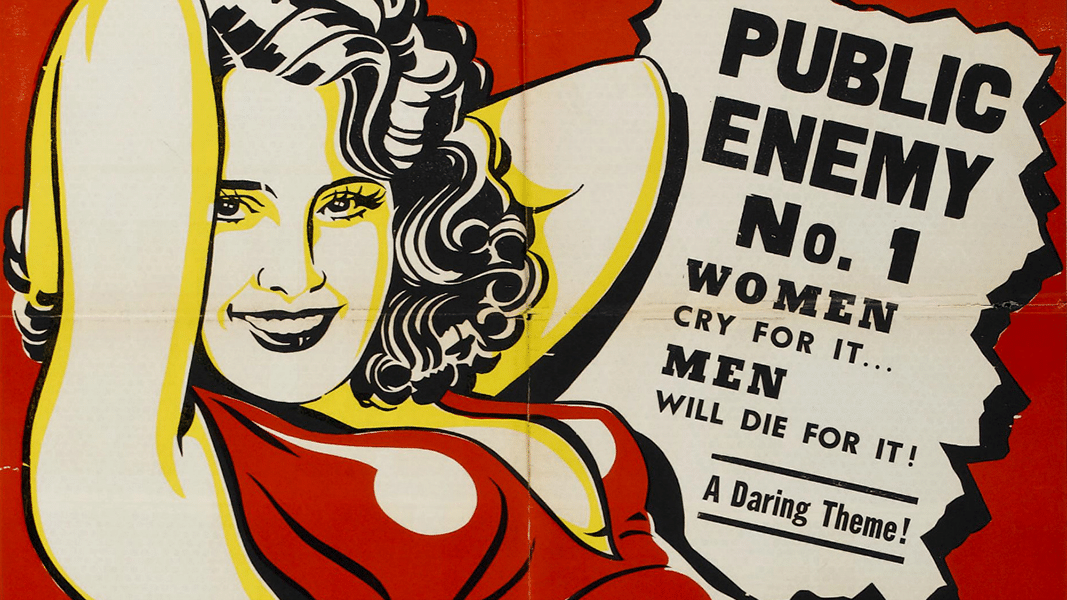On August 11, 1930, Harry Jacob Anslinger became the director of the newly formed Federal Bureau of Narcotics (FBN) in Washington, D.C. He would run the FBN with an iron fist through six presidential administrations spanning more than three decades.
An imposing, husky, bull-necked figure nearly six feet tall, he looked like a tough law-and-order drug buster. With a large square head, huge ears, a cleft chin, and glowering eyes, Anslinger took great pride in his role as the archnemesis of marijuana smokers. He was the godfather of America’s war on drugs, and his influence on public policy would be felt long after death stiffened his fingers in 1975.
When Anslinger grabbed the reins at the FBN, marijuana had already been banned in 24 U.S. states, but there still was no coordinated federal attempt to outlaw the plant. During its first few years, the FBN issued annual reports that minimized the marijuana problem, which Anslinger believed was best dealt with by state and local officials.
The stuff grows “like dandelions,” he complained. Trying to stamp out a plant that flourished everywhere in the world except Antarctica and the Arctic Circle seemed like a dubious proposition. Anslinger had only 300 G-men on his roster, hardly enough to tackle heroin and cocaine, let alone a common weed.
Anslinger didn’t pay much attention to cannabis until 1934, when the FBN was floundering. Tax revenues plummeted during the Great Depression, the bureau’s budget got slashed, and Harry’s entire department was on the chopping block. Then he saw the light and realized that marijuana just might be the perfect hook to hang his hat on. A savvy operator and an extremely ambitious man, he set out to convince Congress and the American public that a terrible new drug menace was threatening the country, one that required immediate action by a well-funded Federal Bureau of Narcotics.
Determined to criminalize the herb and build his bureaucratic fiefdom, America’s top narc promoted all the hoary myths about marijuana-induced mayhem and sexual depravity—stories of pot-crazed axe murderers, playground pushers, sordid drug dens and buxom reefer babes whose lives were ruined by the drug.
“If the hideous monster Frankenstein came face-to-face with the hideous monster Marihuana, he would drop dead of fright,” declared the FBN chief (Washington Herald, 4/1⅔7). Anslinger pulled no punches as he orchestrated a nationwide campaign against marijuana, “the most violence-causing drug in the history of mankind.”
In the world according to Anslinger, cannabis was a deadly, addictive drug that enslaved its users and turned them into deranged criminal freaks. He fed titillating tidbits to reporters, who wrote articles that the FBN chief would then cite in making the case that society was in imminent danger of moral collapse because of marijuana.
Anslinger whipped up enthusiasm for the cause in speeches to temperance organizations, religious groups and civic clubs around the country. His anti-cannabis confabulations were given credence by hellfire-and-brimstone preachers who castigated hemp smokers as fallen sinners. A plant that provided the paper on which Gutenberg first printed the Bible was denounced as “the Devil’s weed.”
Perhaps it was the constant pressure from waging war against a figment of his imagination, or maybe his job was simply too demanding, but on April 1, 1935, an angst-ridden Anslinger checked into the U.S. Marine hospital in Norfolk, Virginia. The FBN chief complained of exhaustion and insomnia—he woke up too early and couldn’t get back to sleep, a condition, ironically, which was treatable with cannabis.
While Anslinger convalesced, others picked up the slack. The FBN chief had a strong ally in the press baron William Randolph Hearst, a megalomaniac obsessed with marijuana, whose newspaper chain stretched across the nation. With an instinc-tual grasp of mass psychology, Hearst used his media empire to influence public policy (as when he pushed the U.S. government into war with Spain in 1898). His contempt for facts, his penchant for fabricated stories and doctored photos, and the hysterical tone of his newspapers gave rise to the pejorative expression “yellow journalism.”
Hearst launched a smear campaign against Mexican migrants and their herb of choice. “Murder Weed Found Up and Down Coast—Deadly Marihuana Dope Plant Ready for Harvest That Means Enslavement of California Children,” the Los Angeles Examiner (1⅕/33) screeched in 1933.
By stigmatizing marijuana and the “foreigners” who smoked it, Hearst succeeded in exacerbating anti-Mexican sentiment during the Great Depression, when many Anglos felt they were competing with brown-skinned migrants for scarce jobs. More than 2 million Mexicans, who had been welcomed while the U.S. economy boomed in the 1920s, were deported when it faltered in the 1930s—a policy of ethnic cleansing vociferously championed by the Hearst conglomerate.
Hearst also cheered the rise of fascist forces in Europe. “Mussolini Leads Way in Crushing Dope Evil” was the headline of a Hearst press screed (3/9/28) that combined two of the owner’s pet passions—his support for fascism and the war on narcotics. Hearst Sunday papers published columns by German Nazi leaders, who conveyed Hitler’s point of view to 30 million readers without space for rebuttal.
During the Third Reich, the verminization of religious and ethnic minorities went hand in hand with Rauschgiftbekämpfung, the “combating of drugs” to promote racial hygiene. Nazi racialist policies and the demonization of marijuana by Anslinger and Hearst were parallel historical phenomena—both exploited fear and hatred of the Other.
The FBN commissioner understood that the likelihood of prohibitory legislation increased if the substance in question was associated with ethnic minorities. Thus Anslinger disclosed in 1936 that 50 percent of violent crimes committed in districts occupied by “Mexicans, Greeks, Turks, Filipinos, Spaniards, Latin Americans and Negroes may be traced to the use of marihuana.” The headlines and the plotlines were antidrug and anticrime, but the subtext was always about race.
Anslinger brandished the non-English term like a truncheon to emphasize the weed’s connection to alien elements that crept over the Mexican border into the United States. Popularized during the Depression, the new name marihuana was, in effect, the evil twin of cannabis, a word familiar to Americans as a medicinal ingredient.
Anslinger eschewed references to benign-sounding cannabis and hemp, while calling for a federal ban on marihuana. Very few Americans knew that marijuana, the weed that some blacks and Chicanos were smoking, was merely a weaker version of the concentrated cannabis medicines that everyone had been taking since childhood.
To gain public support for his crusade, Anslinger depicted marijuana as a sinister substance that made Mexican and African-American men lust after white women. One of the worst things about marijuana, according to the FBN chief, was that it promoted sexual contact across color lines. “Marijuana causes white women to seek sexual relations with Negroes,” Anslinger frothed. He rang alarm bells in segregated America, warning that blacks and whites were dancing cheek-to-cheek in tea houses and nightclubs, where pot-maddened jazz bands performed what the Hearst papers called “voodoo-satanic music.”
In addition to hexing blacks and Mexicans, Anslinger’s antimarijuana diatribes served as a not-so-subtle reminder to white women, who had only recently won the right to vote, that they still needed strong men to protect them from the “degenerate races.” He never tired of telling new versions of the same morality tale, which featured a vulnerable young white woman whose tragic downfall is triggered by smoking marijuana with dark-skinned rogues.
During the run-up to federal legislation that banned cannabis, Anslinger pounded home the message: White women are in mortal peril because of marijuana—and so are American children. That was the upshot of a July 1937 American Magazine article by Anslinger, entitled “Assassin of Youth,” which led with the usual purple prose:
The sprawled body of a young girl lay crushed on the sidewalk the other day after a plunge from the fifth story of a Chicago apartment house. Everyone calls it suicide but actually it was murder. The killer was a narcotic known to America as marihuana, and history as hashish. It is a narcotic used in the form of cigarettes, comparatively new to the United States and as dangerous as a coiled rattlesnake.
“How many murders, suicides, robberies, criminal assaults, holdups, burglaries and deeds of maniacal insanity it causes each year, especially among the young, can only be conjectured,” the FBN chief warned.
With Anslinger pitching script ideas, cannabis was demonized in several low-budget exploitation flicks, some of which were financed by major distilling companies that stood to lose sizable sums if marijuana were a legal competitor.
The film Marijuana! (1935) featured the lurid tagline “Weird orgies! Wild parties! Unleashed passions!” But when it came to ridiculous anti-marijuana propaganda, nothing could top Hot Fingers Pirelli, the bug-eyed piano player who pounds out jazz tunes in Tell Your Children (1936), better known by its later title Reefer Madness.
A perverted pot addict, Pirelli sneaks into a closet and fires up the Devil’s doob, prompting frightful facial twitches as he morphs into an insane killer. Drug-policy critic Jacob Sullum (Saying Yes) calls it “voodoo pharmacology”—the idea that certain substances are molecularly program-med to compel weird, immoral behavior.
Although it bombed at the box office, Reefer Madness was destined to become a cult humor classic among American college students in later years. A vivid example of the national frenzy that set the stage for federal pot prohibition, this film epitomized the synchronicity among Washington, Hollywood and mainstream media in the war against cannabis.
In April 1937, Rep. Robert L. Doughton of North Carolina introduced House Bill 6385, which sought to prohibit the use of marijuana by imposing an exorbitant tax on the drug. When he testified before the House Ways and Means Committee, Harry Anslinger trotted out examples from the “Gore File,” his infamous scrapbook full of Hearst press editorials, racial slurs and anecdotal accounts of horrific murders falsely attributed to marijuana smokers. Bereft of actual scientific data to back up his reefer madness claims, the FBN director presented no evidence of a statistical correlation between marijuana use and criminal behavior.
Members of Congress held only two one-hour hearings to consider the Marihuana Tax Act. The final witness and lone voice of dissent was Dr. William Woodward, the legislative counsel for the American Medical Association, who challenged Anslinger’s claim that cannabis was a dangerous drug with no therapeutic value. AMA doctors, Woodward asserted, were wholly unaware that the “killer weed from Mexico” was actually cannabis. He accurately predicted that federal legislation banning marijuana would strangle any medical use of the plant.
Just four years after relegalizing the consumption of liquor, Congress overwhelmingly passed the Marihuana Tax Act by a voice vote without a recorded tally. Signed by President Franklin D. Roosevelt without fanfare, the law went into effect on October 1, 1937. It was a day of infamy for pot smokers everywhere. Yellow journalism, racial bias and political opportunism had triumphed over medical science and common sense.
Excerpted from Smoke Signals: A Social History of Marijuana—Medical, Recreational and Scientific. This article may not be reproduced in any form without approval from the source. Martin A. Lee is the director of Project CBD. He’s authored and edited several books, including Smoke Signals, Acid Dreams, and The Essential Guide to CBD.







